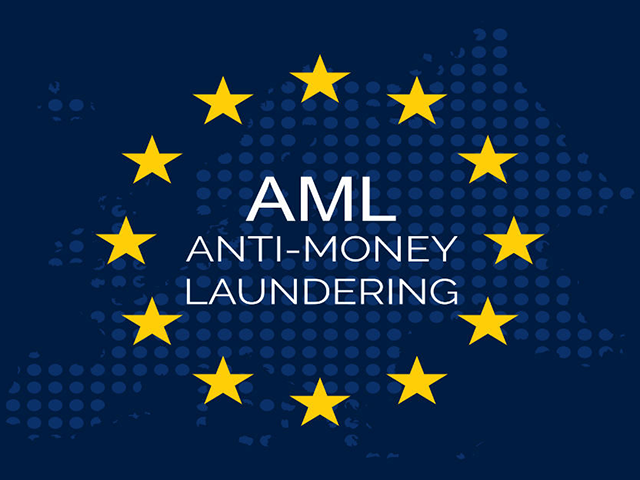- New Anti-Money Laundering Obligations to be Imposed on Art Businesses
- New Anti-Money Laundering Regulations Target the Art Market

- 16 August '19


by Shane Lewis 16 August '19
New Anti-Money Laundering Obligations to be Imposed on Art Businesses
On July 9, 2018, the amendment of the European Union (EU) Anti-Money Laundering Directive (5th AMLD) entered into force. The AMLD obligates certain entities to fulfill customer due diligence requirements when they conduct business transactions and have in place policies and procedures to detect, prevent, and report money laundering and terrorist financing. The amendment
- brings custodian wallet providers and virtual currency exchange platforms within the scope of the AMLD
- interconnects the national central beneficial ownership registers, enhances access to these registers
- lowers thresholds for the use of anonymous prepaid cards
- establishes centralized mechanisms to identify holders of payment or bank accounts
- sets stricter standards for financial transactions with high-risk third countries.
Member States must implement the new rules into national law by January 10, 2020. (Directive (EU) 2018/843 of the European Parliament and of the Council of 30 May 2018 Amending Directive (EU) 2015/849 on the Prevention of the Use of the Financial System for the Purposes of Money Laundering or Terrorist Financing, and Amending Directives 2009/138/EC and 2013/36/EU (5th AMLD), 2018 O.J. (L 156) 43, EUR-Lex website; Directive (EU) 2015/849 of the European Parliament and of the Council of 20 May 2015 on the Prevention of the Use of the Financial System for the Purposes of Money Laundering or Terrorist Financing, Amending Regulation (EU) No 648/2012 of the European Parliament and of the Council, and repealing Directive 2005/60/EC of the European Parliament and of the Council and Commission Directive 2006/70/EC (4th AMLD), 2015 O.J. (L 141) 73, EUR-Lex website).
5AMLD broadens the definition of “obliged entities” by explicitly targeting the art sector. Under 5AMLD, the revised definition of “obliged entities” includes, among other things:
1. persons trading or acting as intermediaries in the trade of works of art, including when this is carried out by art galleries and auction houses, where the value of the transaction or a series of linked transactions amounts to €10,000 or more;2. persons storing, trading or acting as intermediaries in the trade of works of art when this is carried out by free ports, where the value of the transaction or a series of linked transactions amounts to €10,000 or more.

Any individual or company involved in the sale of works of art valued at or above EUR 10,000 will need to conduct customer due diligence when establishing a business relationship or carrying out an occasional transaction, whether in cash or any other means.
Changes to Customer Due Diligence
4AMLD requires obliged entities to carry out customer due diligence including among other things, identifying all sellers and all buyers and verifying their identity; identifying all beneficial owners, where applicable, and taking reasonable measures to verify these beneficial owners’ identity to satisfy themselves that they know who they are transacting with; obtaining information on the purpose and intended nature of the business relationship; conducting ongoing monitoring of the business relationship to ensure transactions are consistent with what the business knows about the seller and buyer, and the risk profile; and retaining records of all such checks and update them whenever there were changes. These due diligence obligations will continue to apply once 5AMLD is implemented in the UK and, as explained above, most UK art businesses will, for the first time, need to introduce systems and processes in order to comply with the 4AMLD due diligence obligations.
While 5AMLD requires an increased level of customer due diligence, including systematic, ongoing monitoring of beneficial owners of existing customers and the regular updating of the proof of registration of customers who are corporate or other legal entities (e.g., trusts).

Under 5AMLD, obliged entities have a duty to discern, as far as reasonably possible, the background and purpose of all transactions that are particularly complex, unusually large, conducted in an unusual pattern, or lacking an apparent economic or lawful purpose. In such instances, obliged entities are required to increase the degree and nature of monitoring of the business relationship to determine whether those transactions or activities appear suspicious.
Enhanced due diligence measures include obtaining additional information on the customer and the beneficial owners as well as on their source of wealth and source of funds for the specific transaction; additional information on the intended nature of the business relationship and the reasons for the intended transaction; obtaining the approval of senior management for establishing or continuing the business relationship; and the conducting of enhanced monitoring of the business relationship on an ongoing basis.
Art businesses should start taking practical steps to become compliant with 5AMLD by:
establishing and maintaining anti-money laundering policies and procedures dealing, in particular, with customer due diligence, reporting, record-keeping, risk assessment and identifying ‘red flags’; appointing a ‘nominated officer’ and making sure that employees know to report any suspicious activity to that officer;
providing on-going training of employees on their anti-money laundering responsibilities. Training should be tailored to the level of seniority and form part of the induction process for new employees. The existing employee should receive refresher training on an annual basis. Training should be compulsory and attendance should be documented and the evidence retained, and taking the risk of money laundering into account in the day-to-day running of transactions.



